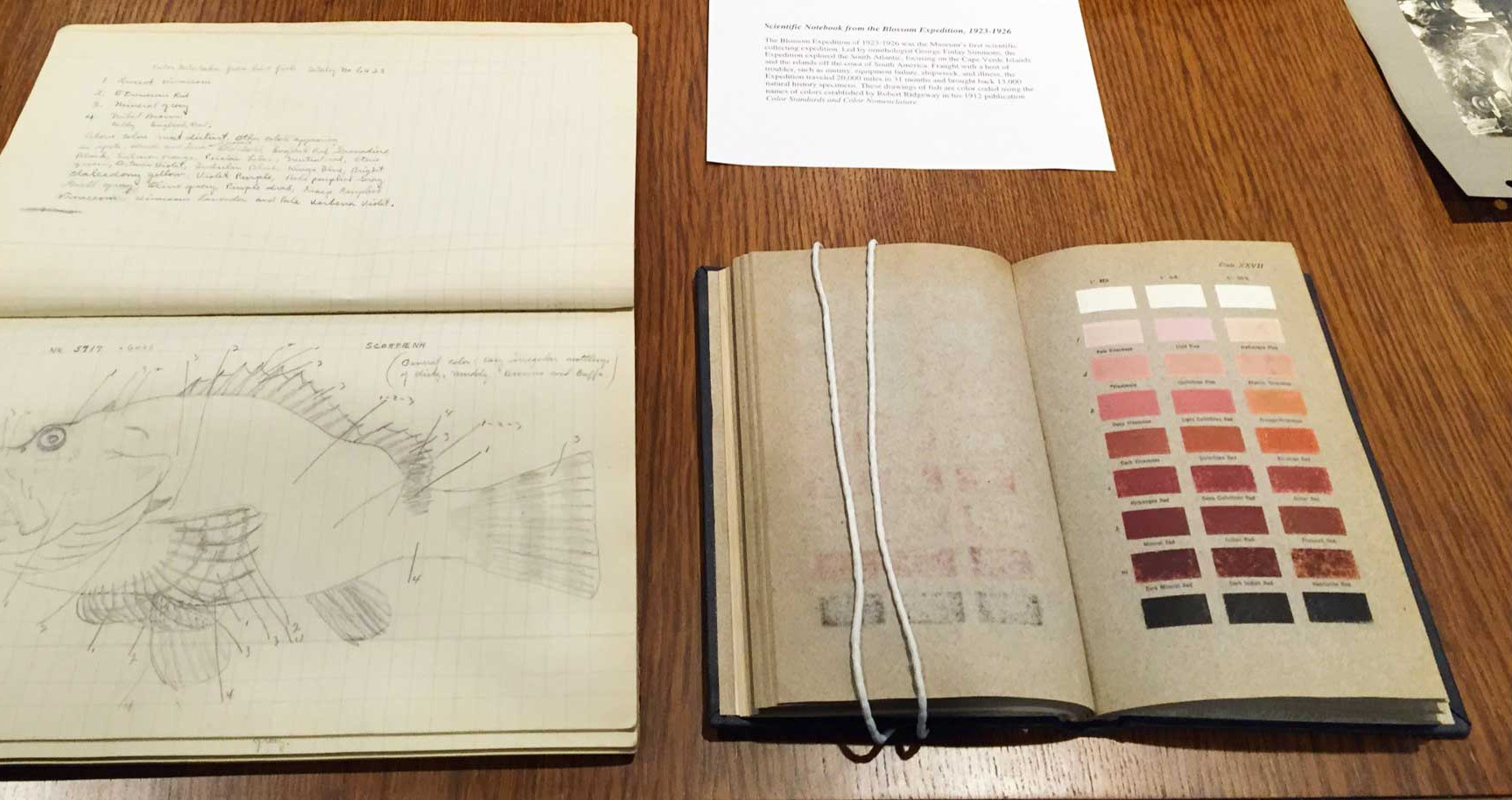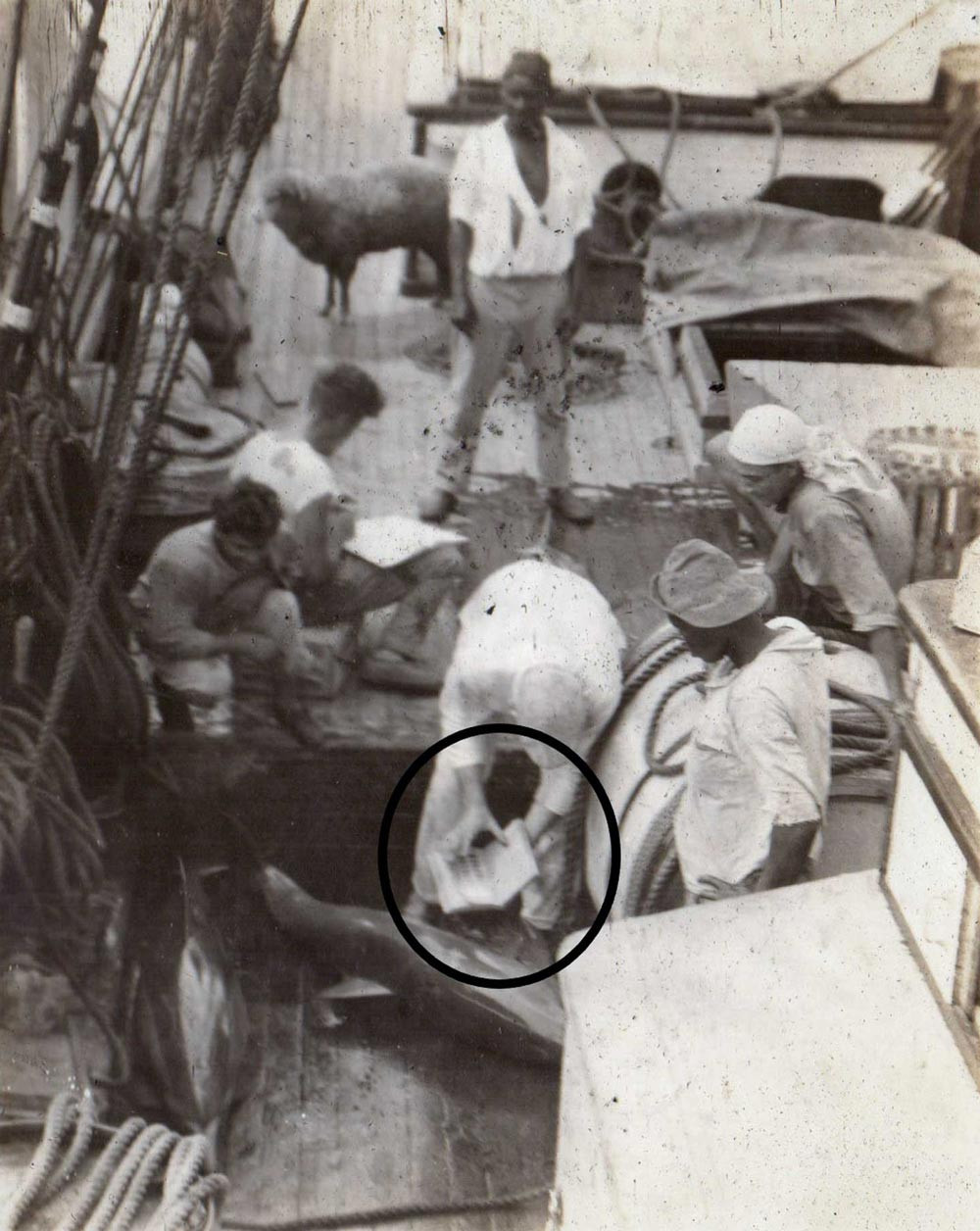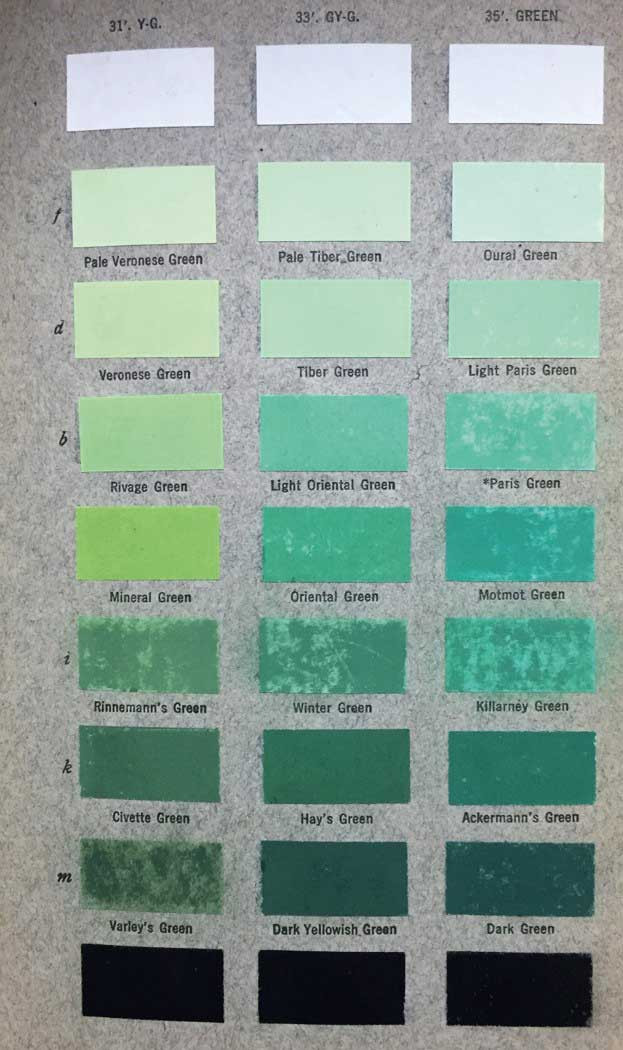Early twentieth-century collectors of natural history specimens benefitted from a volume that codified colors
The Blossom Expedition, the first scientific collecting expedition of the fledgling Cleveland Museum of Natural History (CMNH), sent sixteen men to explore the islands of the South Atlantic from 1923 to 1926. The ship, a three-masted schooner named after Elizabeth Bingham Blossom, the Cleveland philanthropist who made the expedition possible, was well stocked with all the provisions necessary for a three-year voyage. In addition to scientific instruments, tobacco, food, coffee, uniforms, cameras, and a Victrola and records to help pass the time, there was a library of nearly 2,000 books and articles, assembled with the help of librarians at the Cleveland Public Library and New York’s American Museum of Natural History. The library included pleasure reading, such as Robert Louis Stevenson’s Treasure Island and Homer’s Odyssey, meant to inspire the crew on their own long passage, as well as scientific treatises, such as Charles Darwin’s Structure and Distribution of Coral Reefs and William Hornaday’s Taxidermy and Zoological Collecting.
Along with over 12,000 natural history specimens that formed the scientific core of the new museum, the books brought back on the Blossom became the seeds that grew into the museum’s research library and special collections. Browsing the shelves of the rare books and archives is akin to following in the wake of the excursion. Among the books, photo albums, and hand-colored glass lantern slides, one slim book stands out for its use as a scientific tool: Color Standards and Color Nomenclature by Robert Ridgway.
Credit: Archives of the Cleveland Museum of Natural History
Ridgway was the Smithsonian’s first full-time curator of birds, a post he held from 1880 until his death in 1929. He was a prolific writer, amassing an impressive output of articles published in ornithological journals. His crowning achievement was completing eight of the eleven volumes of The Birds of North and Middle America, published by the Smithsonian between 1901 and 1950. Aside from his important work in bird systematics, Ridgway had a lifelong fascination with color, and he was determined to change the way scientists, especially ornithologists, talked about color when describing birds and other living things.
Ridgway’s first attempt at standardizing the names of colors was A Nomenclature of Colors for Naturalists, and Compendium of Useful Knowledge for Ornithologists, published by Little, Brown in 1886. His goal was to provide practical names for different shades and combine those with representative hand-painted swatches. The final version had 120 pages with seventeen plates and is scarce today. Despite favorable reviews, the book was only useful to ornithologists, and Ridgway felt the project was still unfinished. In 1912, Ridgway self-published his second and final attempt at a standard nomenclature for color. He used various dyes to make the swatches, and he contracted with a Baltimore printing firm, A. Hoen, to print 5,000 copies. Ridgway and his wife assembled the color swatches themselves. The final book had 53 plates, each with 21 colors, for a total of 1,113 colors. The book was well-received, forever linking Ridgway’s name to his groundbreaking effort to codify the names of colors.
Color Standards was used to describe the hues of the bird specimens that the crew collected at sea and on the islands of the South Atlantic. When communication from the Blossom was slow to arrive in Cleveland, Paul Marshall Rea, the museum’s director, decided to make a surprise visit to check up on the expedition’s progress. He arrived in Dakar, Senegal, in late summer 1924, nearly a year after the endeavor was launched. He was impressed with the specimens that had been collected; writing in his unpublished report on the scientific results of the voyage thus far, Rea praised the use of Ridgway’s book: “I think it is safe to say that on the Dakar birds the expedition has made one of the most important studies of the fugitive coloration of soft parts that has ever been undertaken. These colors fade quickly after death. The taxidermist cannot restore them accurately unless they are accurately recorded. The literature is full of vague color notes distinguishing little more than the primary colors. There are two ways of recording such colors. One is to have a good scientific artist in the field. This did not seem feasible on the Blossom. The other way is to use a color key. Ridgway’s color key is a book of about one thousand color plates … I am much impressed with the pains taken to make more than five hundred sets of these color notes, covering more than a hundred species. They greatly increase the value of the collection.”
For further reading on Robert Ridgway, see The Feathery Tribe: Robert Ridgway and the Modern Study of Birds by Daniel Lewis (Yale University Press, 2012). For more information about the Blossom Expedition, visit the Cleveland Museum of Natural History’s “Sailing into History.”
In addition to using Ridgway’s book as a tool for identifying the colors of birds, the scientific team aboard the Blossom used it to describe fish and other marine life. The bird colors were noted in narrative format only, but the other specimens were drawn in a field sketchbook. Alongside pencil sketches, the “artist” recorded the color names as they appeared in the Ridgway book. The field notebook is rich with drawings of fish and other specimens whose vibrancy fades quickly after they are removed from the water. The corresponding color names allow scientists today to accurately identify the specimens, making them more useful for future research.
The Biodiversity Heritage Library has digitized Ridgway’s iconic color book, making it accessible to many more people than he could ever have imagined. However, nothing compares to holding the physical book at CMNH and noticing the color swatches that are faded from the sun, splotched from the saltwater, and scratched from heavy use by the Blossom’s crew members. This book was truly a witness to exploration in the name of science.





















